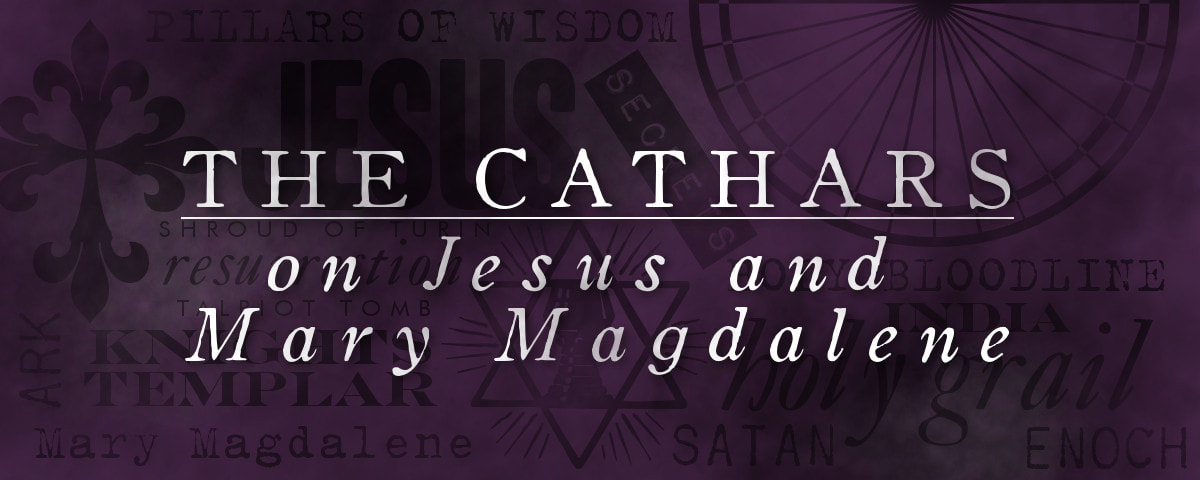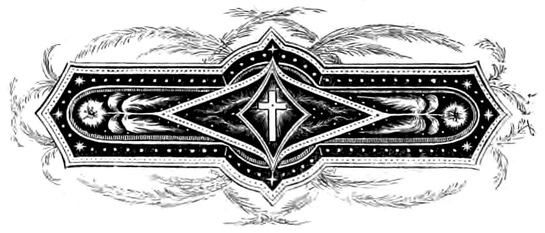Peter of les Vaux-de-Cernay
Historia Albigensis 10-11
(Older numbering: Chapter 2)
c. 1212-1218
translated by Jason Colavito
2014
|
NOTE |
In my book Foundations of Atlantis I describe this text this way: “Font for many claims about the New Age spirituality of the Cathars, the text also provides a rare legend about Jesus’ alleged sexual relationship with Mary Magdalene. Obviously, this text cannot support claims that the Cathars considered Mary Magdalene an object of veneration, as they identify her as the concubine of an evil demon-god. The names of God’s wives Oolla and Ooliba are the symbolic sister-whores Oholah and Oholibah (Vulgate: Oolla and Ooliba) of Ezekiel 23:4, where they stand for Israel and Judah and are the brides of God.”
|
First, it should be known that the heretics [the Cathars] propose the existence of two creators, one of things invisible, whom they call the benign God, and one of things visible, whom they name the evil God. They attribute the New Testament to the benign God and the Old to the malign God, and they repudiate all of the Old Testament except for certain passages included in the New Testament, which they judge to be appropriate because of their respect for the New Testament. They assert that the author of the Old Testament is a liar, for he said to the first created man: “But of the tree of the knowledge of good and evil, thou shalt not eat of it: for in the day that thou eatest thereof thou shalt surely die” (Gen. 2:17), yet they did not die after eating of it, as he had said they would—though in reality after eating of the forbidden fruit they became subject to death. They also called him a murderer because he incinerated the people of Sodom and Gomorrah, destroyed the world by the waters of the Flood, and overwhelmed Pharaoh and the Egyptians with the sea. They declared that all of the patriarchs of the Old Testament were damned; they asserted that John the Baptist was one of the greatest devils. And they also said in their secret meetings that the Christ who was born in the earthly and visible Bethlehem and crucified in Jerusalem was evil; and that Mary Magdalene was his concubine; and that she was the woman taken in adultery of whom we read in Scripture (John 8:3). Indeed, the good Christ they say neither ate nor drank nor assumed the true flesh, nor was he ever in this world except spiritually in the body of Paul. But for this reason we say “in the earthly and visible Bethlehem”: The heretics believe there to be another earth, new and invisible, and in this second earth some of them believe the good Christ was crucified. Likewise, the heretics say the good God had two wives, Oolla and Ooliba, and from these he begat sons and daughters. There were other heretics who said that there was one Creator, but that he had as sons both Christ and the Devil. They said that all creatures were once good but that from the vials of which we read in the Apocalypse (Rev. 16:1-21), all were corrupted.
Source: Translated by Jason Colavito from the Latin in Petrus Vallium Sarnaii Monachus, Hystoria albigensis, eds. P. Guébin and E. Lyon (Paris: Honoré Champion, 1926), 9-12.




